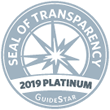Clinical Thyroidology® for the Public
EDITOR’S COMMENTS
Welcome to another issue of Clinical Thyroidology for the Public! In this journal, we will bring to you the most up-to-date, cutting edge thyroid research. We also provide even faster updates of late-breaking thyroid news through X (previously known as Twitter) at @thyroidfriends and on Facebook. Our goal is to provide patients with the tools to be the most informed thyroid patient in the waiting room. Also check out our friends in the Alliance for Thyroid Patient Education. The Alliance member groups consist of: the the American Thyroid Association®, Bite Me Cancer, the Graves’ Disease and Thyroid Foundation, the Light of Life Foundation, MCT8 – AHDS Foundation, ThyCa: Thyroid Cancer Survivors’ Association, and Thyroid Federation International.
We invite all of you to join our Friends of the ATA community. It is for you that the American Thyroid Association® (ATA®) is dedicated to carrying out our mission of providing reliable thyroid information and resources, clinical practice guidelines for thyroid detection and treatments, resources for connecting you with other patients affected by thyroid conditions, and cutting edge thyroid research as we search for better diagnoses and treatment outcomes for thyroid disease and thyroid cancer. We thank all of the Friends of the ATA who support our mission and work throughout the year to support us. We invite you to help keep the ATA® mission strong by choosing to make a donation that suits you — it takes just one moment to give online at: www.thyroid.org/donate and all donations are put to good work. The ATA® is a 501(c)3 nonprofit organization and your gift is tax deductible.
September is Thyroid Cancer Awareness Month.
In this issue, the studies ask the following questions:
- Who gains the most weight after hyperthyroidism treatment?
- Do CT scans cause thyroid cancer?
- Does treatment of hypothyroidism depend on your age, sex, or insurance status?
- Does active surveillance of small, low-risk thyroid cancer affect a patient’s quality of life?
- Should there be personalized reference intervals for thyroid function tests?
- Is TransCon PTH a safe and effective treatment for hypoparathyroidism?
We welcome your feedback and suggestions. Let us know what you want to see in this publication. I hope you find these summaries interesting and informative.
— Alan P. Farwell, MD



